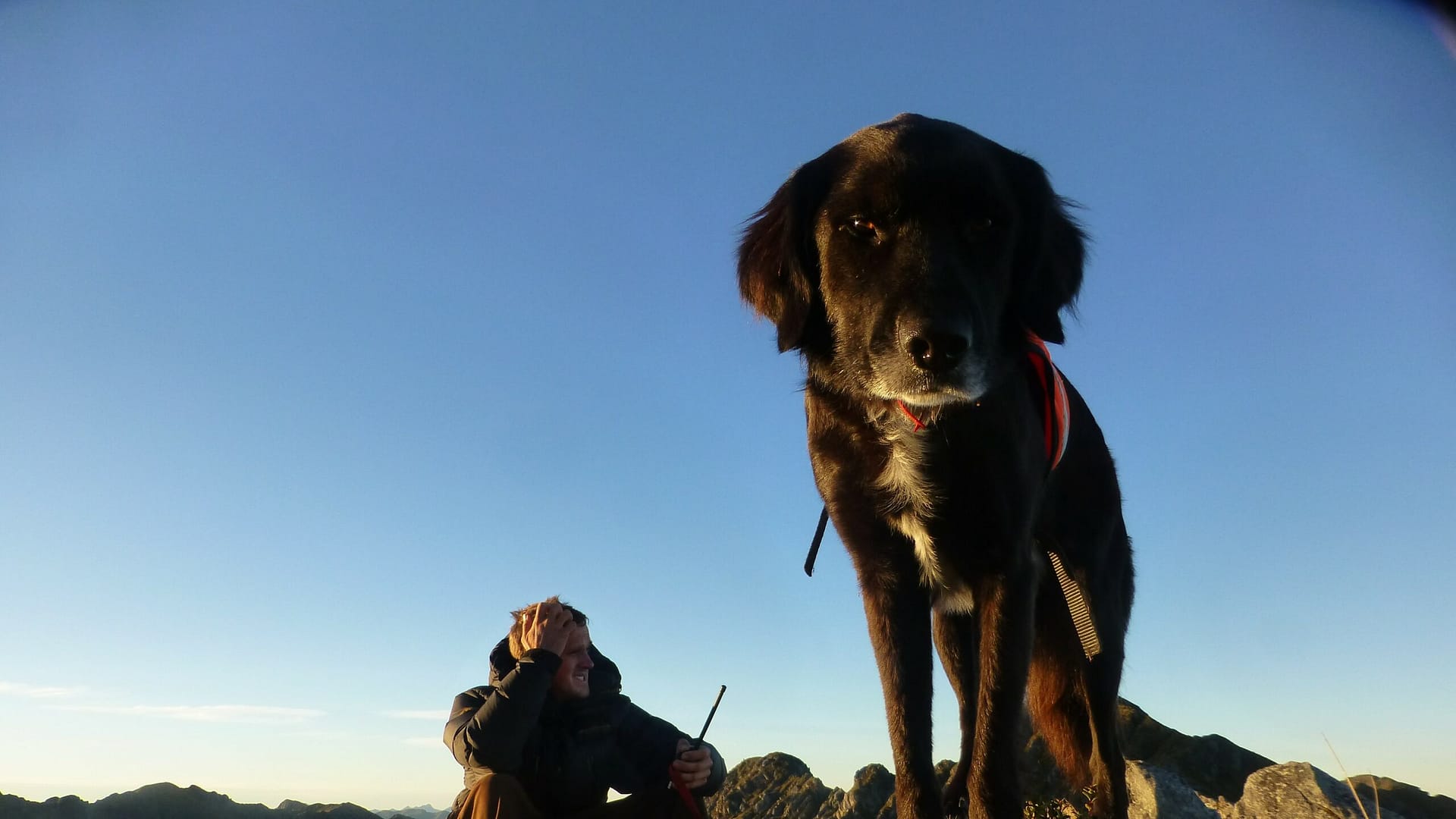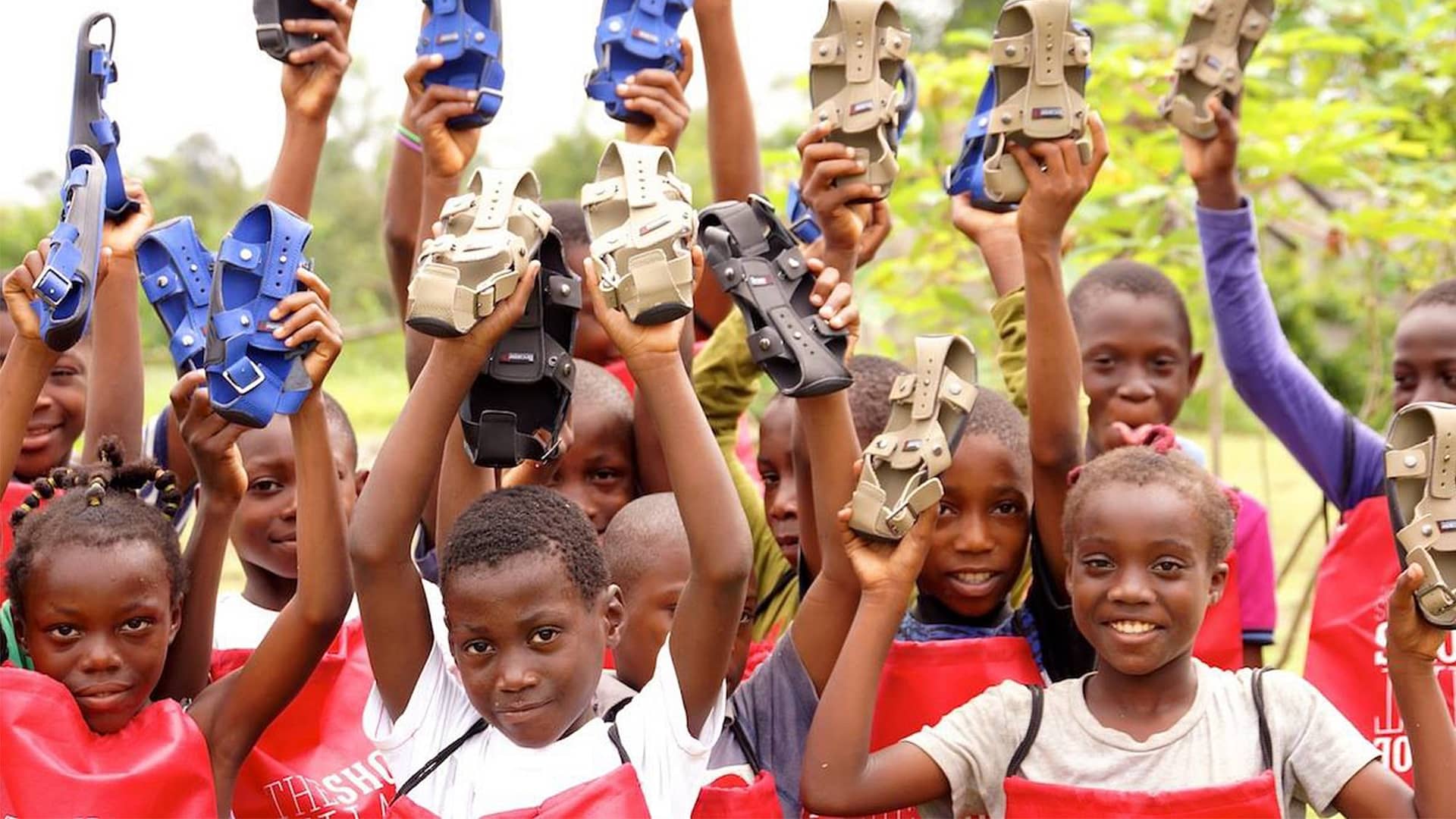The mountains of New Zealand are home to a fascinating community of inquisitive, mischievous parrots who make their homes not in the trees but on the ground. They are called kea, and over the last 200 years their populations have been decimated, placing them on the endangered species list and leaving them in dire need of conservation efforts. With unnatural foes attacking their nests, an unexpected hero has come to their rescue. He doesn’t wear a cape but rather a collar, and with his sidekick, Corey Mosen, Ajax the border collie-cross has devoted his life to keeping kea safe.
Together, Ajax and Corey have created a unique life in the stunning and otherworldly mountains of New Zealand. With the mountaintops as their office and a commute like no other, they worked side-by-side to track and monitor kea nests, defend them from harm, and work to understand the threats to the species.
Theirs is a story full of perseverance, hope, adventure, and genuine love for our world.
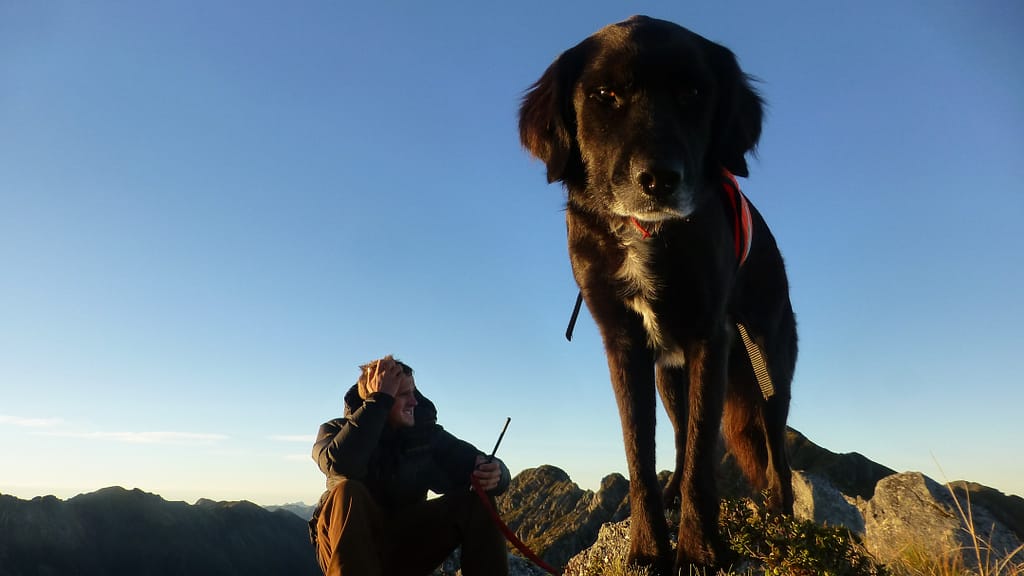
Courtesy of Corey Mosen
Photographed by Jane Taylor
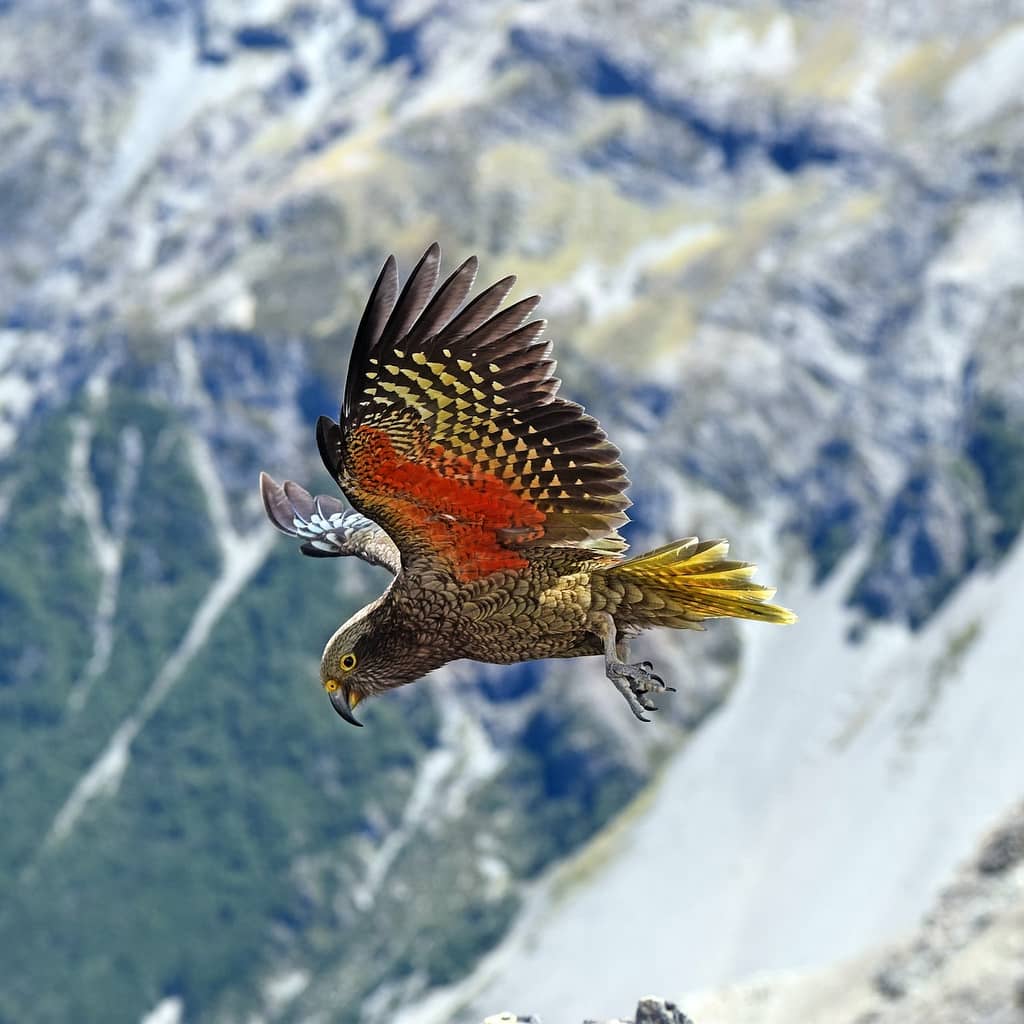
New Zealand is completely unique when it comes to its biodiversity and native species. Being far out in the Pacific Ocean, the country has no native land mammals–not a single one 1 kill these birds when they are young—sometimes in their nests just moments after they hatch from their eggs—and are the number one threat to kea even today.
As a result of the historical and invasive species threats, current estimates suggest 3,000 – 7,000 kea remain in the wilds of New Zealand 2, with some estimates as low as 2,000 3, a severe decline from the close to 150,000 that once thrived in the country 4.
Ok, so there are less birds. But why should I care if a species is endangered?
Our world evolved to not only survive, but thrive. When even one species becomes endangered, it is a warning sign that the ecosystem they call home is under threat and out of balance in a significant way. And when the balance of our planet is being thrown out of whack with increasingly unhealthy forests, grasslands, rivers, oceans, and other ecosystems, humans (and animals) lose precious clean air, water, and land. As the Endangered Species Coalition says, “If we allow our environment to become contaminated, we risk our own health.” 5
This means that even a single species becoming endangered is not only bad news for the species itself, but also for their home ecosystems, and for humans, too. That’s where Ajax and his human Corey come in.
The bird-saving dog!
Kea nests don’t look like the traditional nests you may picture in a tree. They are generally hidden in rocky crevasse, holes in tree roots, and other naturally occurring cavities. 6 This makes them hard to find and monitor using just human senses.
Trained in Kea location, Ajax would put his nose to work, sniffing out kea nests for Corey to track and monitor kea patterns. This research helped Corey and other researchers learn more about the health of kea populations and ecosystems. With his highly trained nose, Ajax led Corey to nests where he was able to weigh and monitor the birds and track how many chicks survive to adulthood.
Their work together brought them into remote, challenging, and of course, beautiful landscapes in the New Zealand countryside.
Ajax, the world’s only kea conservation dog, was trained since he was a small pup. This adventure-loving dog has gone in boats, helicopters, caves… everywhere Corey went, all in the name of conservation.
“I want people just to look at kea as an important species that we have here on the south island of New Zealand. And I want stories like this about me and Ajax to make people aware of how neat and special they are.”
– Corey Mosen
Without further ado, here’s National Geographic’s incredible feature that we could not recommend more highly, all about this passionate conservationist and his canine companion, directed by Michael Weatherall and produced by Cecelia Shand.
Thank you to National Geographic for this stunning video and amazing story of Ajax and Corey’s work. When we know about stories like this, we are able to stand a little taller and think a little bigger, with faith in humanity restored.
To see more of Ajax and Corey online, you can find them on Facebook and Instagram. Ajax sadly passed away in 2022, but his valiant conservation efforts live on in the countless kea whose nests he saved, flying around New Zealand today.
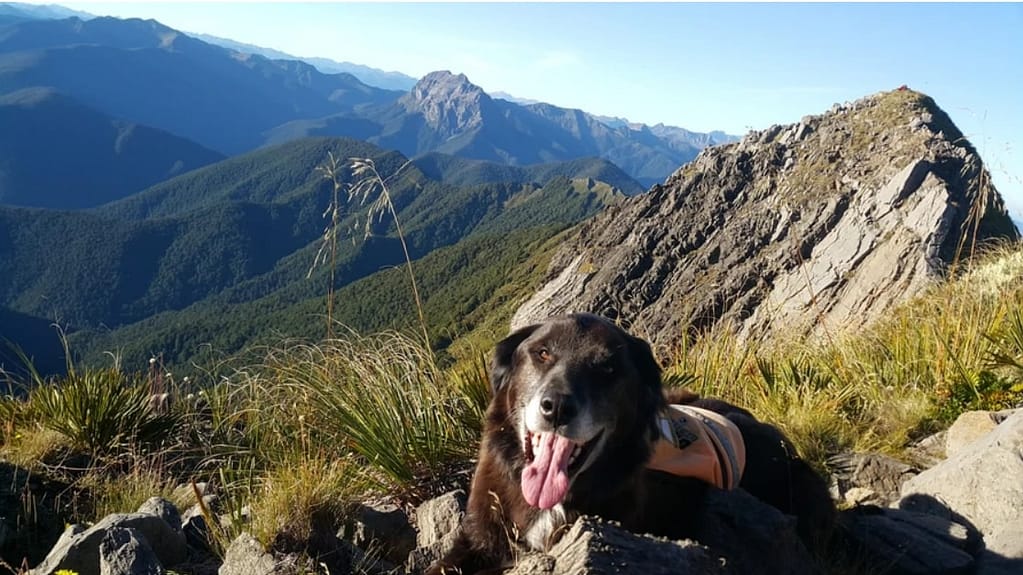
Courtesy of Corey Mosen
His sidekick, Corey, has written multiple books about their incredible work together, which you can find on his website. Message him there if you would like your very own copy of his various books. There, you can also make a donation to the Kea Conservation Trust, who continue to do incredible conservation work in New Zealand.
More than our best friends!
Ajax’s conservation legacy isn’t alone in its importance. Detection dogs are not only accurate, but are considered far more efficient than other conservation surveying methods, and are being used in New Zealand to help conserve other important species like the iconic kiwi, the fascinating tuatara, beautiful takahē, and the world’s smallest penguin, the little blue penguin. 8
And beyond New Zealand around the world, dogs are employed in more than 30 occupations from truffle hunting, to cancer and seizure detecting, to ocean therapy and wildlife crime-stopping.
Turns out, “man’s best friend” is doing a lot more to impact our people and our planet beyond bringing joy and good snuggles.
How can we save future species from the predicament kea now find themselves in?
Conservation organizations are doing incredible work around the globe, and truly inspire hope for humanity. There are so many people (and dogs!) around the world who are genuinely improving our world every day. But how can we halt climate crises before they get severe? How do we protect a species before it becomes endangered?
You can’t solve a problem with the same mindset that created it.
Teams like Corey and Ajax are doing incredible jobs protecting these species, but governments and humans need to make changes, too, to make sure that we don’t repeat the same mistakes and endanger kea further, or endanger other species anew.
So, what can you do to help? Here are 15 ideas from the Endangered Species Coalition on what we can all do to protect endangered species:
- Learn about endangered species in your area
- Create a backyard wildlife habitat
- Establish a pollinator garden with native vegetation in your yard
- Minimize pesticide and herbicide use
- Reduce your use of water
- Place decals on windows to help prevent bird collisions
- Slow down when driving
- Recycle and buy sustainable products
- Don’t litter!
- Organize or participate in “clean up” campaigns in your area
- Never purchase products made from endangered species (i.e. ivory, coral, or tortoise shell)
- Report any harassment of threatened species to the proper authorities
- Visit a national wildlife refuge or park
- Be vocal to your local government urgent support for important species
- Join others in the annual Stop Extinction Challenge in August
To learn more about why these things small make a big difference, click here.
Protecting endangered species is vital, but being careful to not spread or aid invasive species like New Zealand’s pesky rats and stoats is a big piece of the puzzle, too. To learn more about what you can do on the invasive species front in your everyday life, here are some tips from the Nature Conservancy on how you can help.
Remember, endangered species are just the first domino to fall in any ecosystem, and lead to much bigger problems for not only animals, but humans as well.
“Nature needs your care. Animals need your attention. People need your light. The world needs your love.”
– Matshona Dhliwayo
For more incredible stories of conservation success, check out one of our new Collections featuring some of our favorite conservation success stories.
So as much as you can, do what you can to help your little corner of the world, just like Ajax and Corey. When we all push the first small domino to a better world, we can make a big difference.
- Ellen

Don’t miss out on a single article!
Enjoy unlimited access to over 500 articles & podcast that give you a positive perspective on the state of the world and show you practical ways you can help.
Notes:
- “Native Animals.” Govt.nz, 2023, www.doc.govt.nz/nature/native-animals/#:~:text=New%20Zealand%20has%20many%20unique,are%20bats%20and%20marine%20mammals. Accessed 23 Mar. 2023[/ref]. It wasn’t until European colonization that creatures like mice, rats, horses, cows, and especially sheep (which the country is now famous for) made their way to New Zealand. With a lack of major predators–like rodents–for the majority of their evolutionary history, the islands’ birds developed some unique behaviors, most notably an increase in species making their nests on the ground, the kea included.
As the world’s only alpine parrot, kea are remarkably smart and curious. They surf on cars, move traffic cones, and cause all kinds of mischief for the humans they come across. With a majestic 3-foot wingspan which reveals a stunning orange stripe, these birds are a beloved emblem of New Zealand’s unique native creatures.
But despite their awe-striking appearance and wit, kea have faced real challenges. Their smarts led to all kinds of mischief and property damage, which in the 1800s led to a bounty of ~$85 per kea, when hunters and farmers aimed to kill this majestic creature. Additionally, those non-native land mammals brought by colonizers, specifically stoats, cats, possums, and other rodents 9The. “Kea.” AZ Animals, 2 Nov. 2022, a-z-animals.com/animals/kea/. Accessed 23 Mar. 2023. ↩ - “Kea.” Govt.nz, 2017, www.doc.govt.nz/nature/native-animals/birds/birds-a-z/kea/. Accessed 23 Mar. 2023. ↩
- “Loading Docs 2017 – Ajax the Kea Conservation Dog | Web | NZ on Screen.” @Nzonscreen, NZ On Screen, 2017, www.nzonscreen.com/title/loading-docs-ajax-kea-conservation-dog-2017. Accessed 23 Mar. 2023. ↩
- “Creature Feature: Kea.” Theethogram.com, WordPress.com, 19 Jan. 2021, theethogram.com/2021/01/19/creature-feature-kea/. Accessed 23 Mar. 2023. ↩
- “Importance of the Endangered Species Act – Endangered Species Coalition.” Endangered Species Coalition, 2013, www.endangered.org/importance-of-the-endangered-species-act/. Accessed 23 Mar. 2023. ↩
- “Kea | New Zealand Birds Online.” Nzbirdsonline.org.nz, 2013, nzbirdsonline.org.nz/species/kea. Accessed 23 Mar. 2023. ↩
- https://www.youtube.com/watch?v=VnFTzH1IjmU ↩
- Rykers, Ellen. “Track and Trace.” New Zealand Geographic, 2017, www.nzgeo.com/stories/track-and-trace/. Accessed 23 Mar. 2023. ↩


